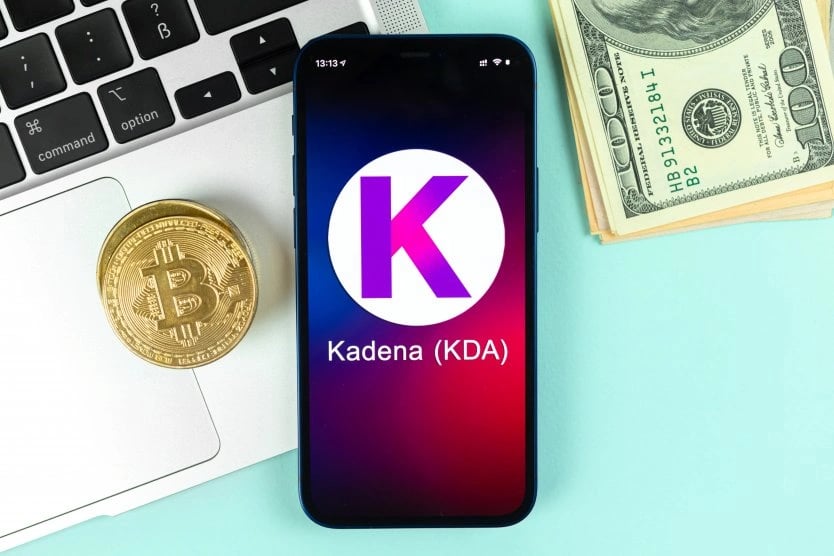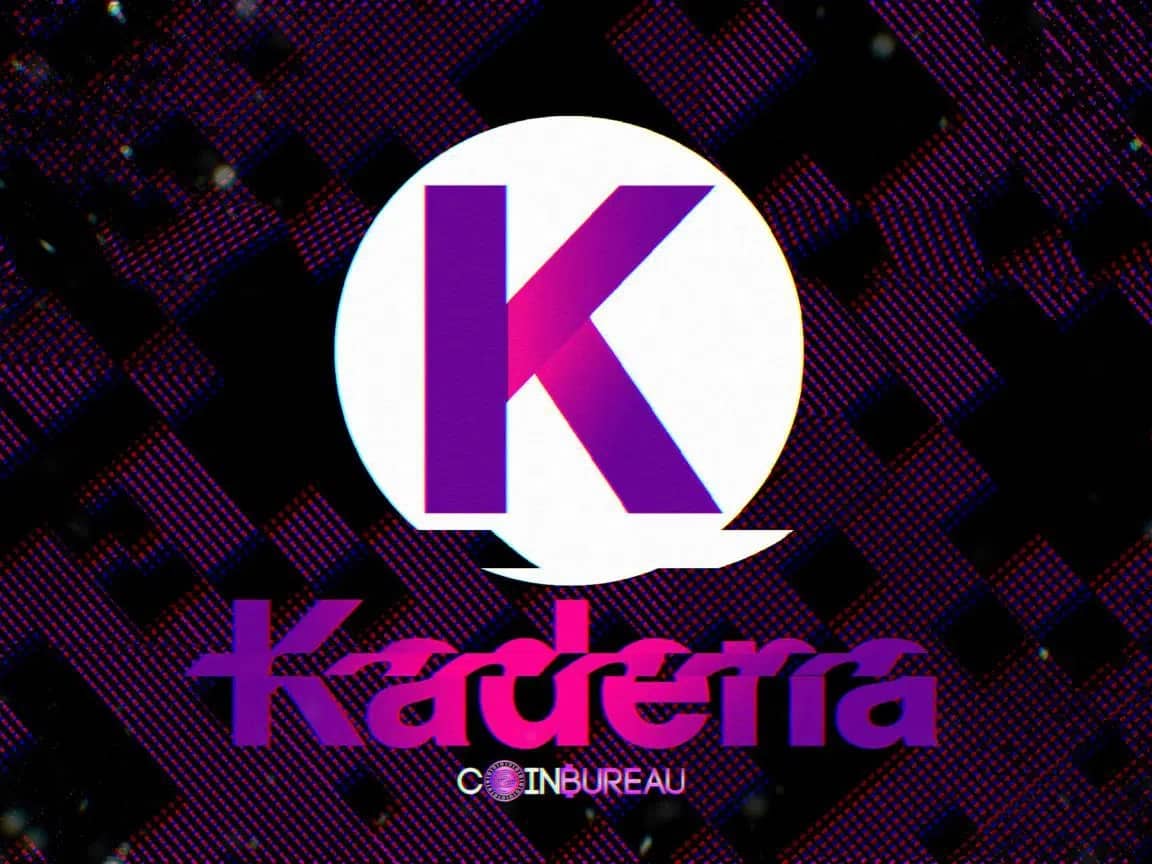订阅 wiki
Share wiki
Bookmark
Kadena
Kadena
Kadena 是一个许可型 智能合约 平台,拥有唯一分片且可扩展的Layer-1工作量证明公共网络。Kadena 是第一家从摩根大通区块链卓越中心走出来的 区块链[3] 技术公司。
2020年11月,Kadena 与 稳定币 制造商 Terra 合作,旨在扩展其 DeFi 平台。Kadena 表示,它将在 2021 年将其去中心化交易所 (DEX) Kadenaswap 中添加 Terra 的 luna 稳定币。[1][2]
概述
Kadena 是第一家从摩根大通区块链卓越中心走出来的 区块链 技术公司。Kadena 在 2018 年的一轮融资中筹集了 1500 万美元,Multicoin Capital 和富达投资所有者的风险投资部门也加入了该轮融资。

2019 年 4 月,Kadena 在 Kadena 测试网上通过了 10,000 个区块。他们还增加了对集成式无需信任 SPV 证明的支持,以实现跨链交互。此外,他们还发布了 Pact 智能合约保护和功能的完整形式验证覆盖。
在 5 月的 Consensus 大会上,Kadena 宣布与 30 亿美元的基金 USCF 建立合作伙伴关系,USCF 是另类投资领域的领先资产管理公司。除了在 Consensus 大会上发表演讲外,Kadena 研究和网络主管 Monica Quaintance 还在同月举行的麻省理工学院技术评论的区块链商业会议上发表了演讲。
在 2019 年 6 月于斯德哥尔摩举行的电气和电子工程师协会欧洲安全与隐私研讨会上,Kadena 的 Monica Quaintance 和 Gauntlet Networks 创始人兼首席执行官 Tarun Chitra 展示了经过同行评审的研究,该研究使用基于代理的模拟来验证 Kadena 的编织工作量证明链可以安全地扩展。在产品方面,该公司发布了简单支付验证 (SPV) 支持,并将 Pact 更新到 3.0 版本,其中包含模块化治理和其他功能。
2019 年 11 月,Kadena 团队宣布 Kadena 的主网已完全可供公众挖矿。人们还可以通过 Kadena 的区块浏览器观看并行链的挖矿过程,该工具允许实时跟踪。
Kadena 网络建立在工作量证明和 Pact 智能合约语言之上。为了鼓励网络的稳定增长,Kadena 的公共区块链继续使用 Blake2s 作为其主要哈希函数,并支持 CPU 挖矿。
2019 年 11 月,Kadena 与 Web3 基金会签署了一项协议,以探索在 Polkadot 上实施 Pact。Kadena 还宣布与可互操作的区块链网络 Cosmos 合作。Kadena 还在 AWS Marketplace 和 Azure Marketplace 上提供企业级解决方案,作为区块链即服务产品。
2019 年 11 月,Kadena 团队还分享了 Kadena 1.1 的发布时间表,该版本启用了 Kadena 公共区块链上的代币转移。在最初发布后,从 2019 年 12 月 17 日开始,版本 1.0.5 到 1.1 的过渡分三个阶段进行,随后是传输量增加的时期。
2019 年 12 月,Kadena 宣布与医疗保健供应链数据平台提供商 Rymedi 建立战略合作伙伴关系。Rymedi 与 Kadena 区块链的集成提供了不可变的供应链谱系和多合作伙伴数据访问,扩展了现有客户的功能,从跟踪蒙古和肯尼亚等发展中国家的药品供应链到协助希望将最安全产品推向市场的 hemp/CBD 种植者和提取者。
12 月,Kadena 宣布矿工赚取的代币可以从其他人(点对点)转移到其他人。自从该团队于 10 月 30 日向社区宣布挖矿以来,该网络经历了显着增长。截至 12 月 17 日,他们看到超过 1,000,000 个区块被超过 10,000 个 GPU 挖出(平均哈希率为 10-15 TH/秒)。
2020 年 5 月,Kadena 开始与 ChainLink 合作,将 Chainlink 市场领先的去中心化预言机网络集成到 Kadena 的可扩展 Layer-1 工作量证明公共区块链中。这是在公共/私有混合 区块链 平台上部署预言机的行业首创。Kadena 生态系统中的企业和企业家可以利用 Chainlink 预言机,使用 Chainlink 的大量预制输入和输出创建端到端的 Pact 智能合约。Kadena 开发人员可以通过构建市场价格的价格参考合约并利用其外部适配器技术来离线访问凭证 API 和旧系统,从而从 Chainlink 的高质量数据中受益。[4]
2020 年 6 月,Kadena 与 Coinbase 的 Rosetta 合作。
2020 年 7 月,Kadena 在 Bittrex 上首次正式上市其 KDA 代币。Bittrex Global 上的初始 KDA 交易对是比特币 (BTC) 和 Tether (USDT)。
2020 年 11 月,Kadena 与 稳定币 制造商 Terra 合作,旨在扩展其 DeFi 平台。Kadena 表示,它将在其去中心化交易所 (DEX) Kadenaswap 中添加 Terra 的 luna 稳定币,该交易所于 9 月早些时候宣布,预计将在年底推出。Kadena 希望利用其混合区块链作为其 DeFi 产品的卖点,吸引希望摆脱基于以太坊的平台拥堵的企业和用户。通过 Kadenaswap 将 Terra 和其他代币从一个网络移入和移出的第一阶段将于 2021 年进行。Kadenaswap 的用户将受益于 Terra 稳定币,这些稳定币以美元、韩元和菲律宾比索等法定货币支持。[5]
KDA 代币
Kadena 经济中的大部分代币都是挖矿奖励,因为网络依赖于去中心化挖矿来实现功能和增长。矿工因验证/生产区块而获得区块奖励。区块奖励是该平台的原生加密货币 Kadena (KDA)。矿工还可以通过执行智能合约获得 KDA 作为交易费用或 gas 费。KDA 的最小分数单位是“Hop”,即万亿分之一,以计算机编程先驱 Grace Hopper 的名字命名。[6]
Kadena 代币发行
Kadena 的代币销售于 2019 年 11 月 5 日太平洋标准时间下午 12:00 在 CoinList 上线。
Chainweaver
2020 年 1 月,Kadena 宣布将其数字钱包 Chainweaver 集成到 Cosmos 网络中。Chainweaver 是一个多区块链互操作钱包,也可作为智能合约的开发环境。Chainweaver 与 Cosmos 生态系统的集成已于 2020 年第一季度末完成。
Chainweaver 支持 Pact 智能合约语言的开发,该语言在 Cosmos 生态系统中以 Kadenamint 的形式提供。借助 Chainweaver,开发人员可以从同一界面为 Cosmos 和 Kadena 编写智能合约,从而使开发人员可以访问市场领先的功能,例如形式验证和基于功能的安全性。
加密货币加油站
2020 年 8 月,Kadena 在其 区块链 上实施了世界上第一个加密货币加油站。为了实施该项目,Kadena 通过开源浮动了两种类型的加油站,供社区审查。第一种是“gas guard type”,即交易中使用的 gas 限制在阈值内的加油站。另一种被称为“gas payer”,只允许批准的帐户或使用某些功能。gas guard 概念用于促进 ZelCore 多币种加密货币钱包上的交易。gas payer 类型的加油站的灵活性和用户友好性显示了区块链的力量。
Pact Core 和 KadenaDOT
作为与 Polkadot 团队持续合作的一部分,Kadena 的首席语言工程师 Emily Pillmore 开发了一种令人兴奋的长期方法,可以将 Pact 的优势扩展到 Polkadot 社区,同时进一步将 Pact 作为智能合约的标准:Pact Core。
作为 Pact Core 的替代方案,以及与 Polkadot 更快的集成,Kadena 的许可区块链技术 Kuro 可以适应作为 Polkadot 平行链运行,这种设计称为 KadenaDOT。Kuro 是摩根大通 Juno 区块链的演变,Kadena 的创始人已成功地在内部部署了第一代 JPMCoin。Kuro 是有史以来创建的最快的企业级区块链之一,具有运行 Pact 智能合约的内置能力。KadenaDOT 充当 Polkadot 和 Kadena 生态系统之间的桥梁技术,为平行链运营商提供 Pact 智能合约的强大功能,而 Core Pact RFC 将实现 Pact 在整个 Polkadot 网络中运行的最终目标。[7]
团队
创始人
- Will Martino(创始人兼首席执行官)
- Stuart Popejoy(创始人兼总裁)
业务
- Monica Quaintance
- Anastasia Bez
- Jeffrey Ou
- Leah Bingham
营销
- Tony Pham
- Miguel Romero
产品
- Taylor Rolfe
工程
- Doug Beardsley
- Lars Khutz
- Emily Pillmore
- Linda Ortega
- Hee Kyun Yun
顾问
- Stuart Haber,密码学
- Wayne Martino,法律
- Alex Pinchev,营销[8]
发现错误了吗?
